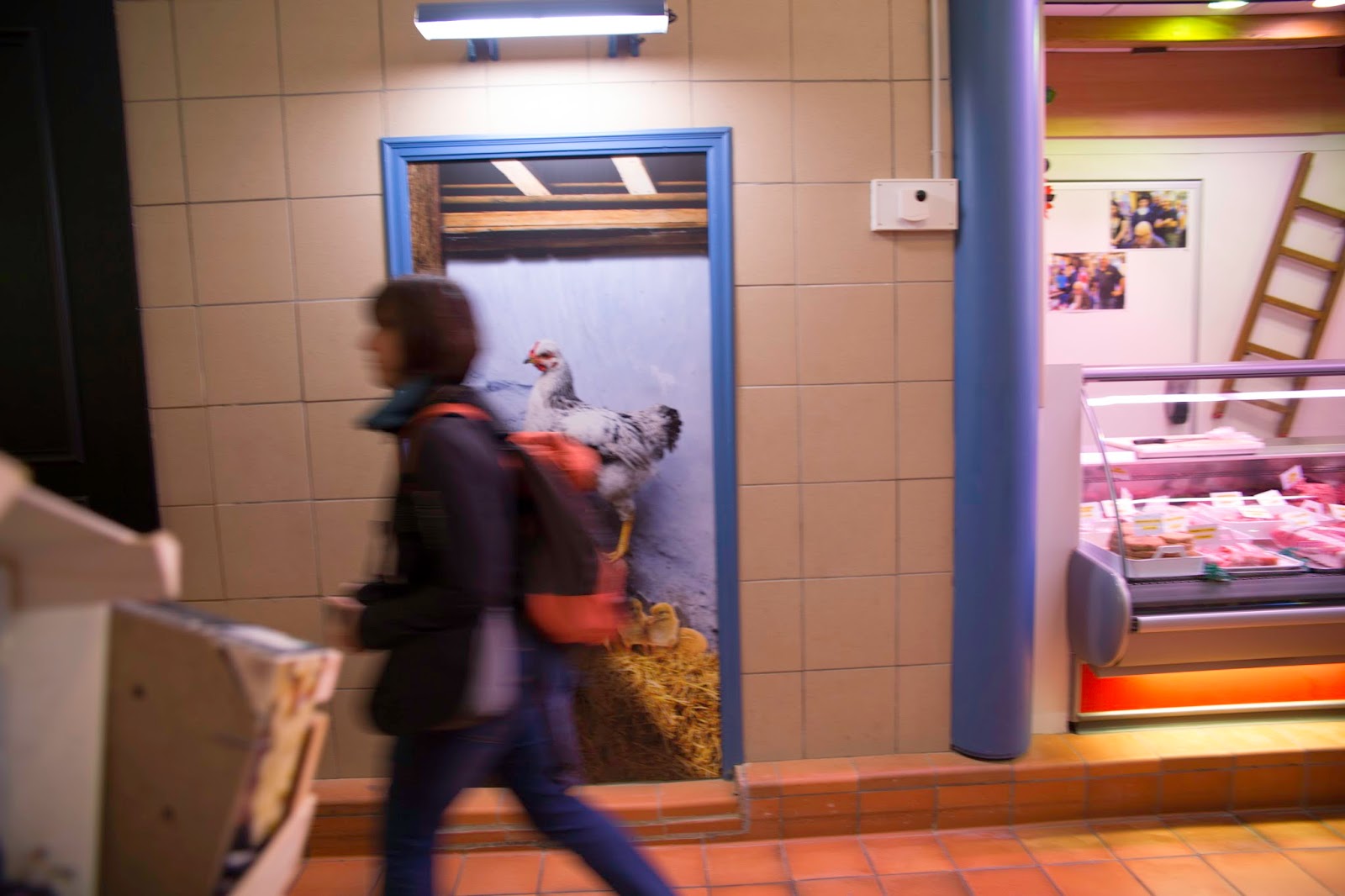The aim is to find, as for the last exercise, a ‘comfortable’ situation, possibly even the same location, and concentrate on bursts of activity, from which trying to capture a ‘best’ moment.
Judging and capturing the moment that works best in an image is an important step in progressing photography of people.
When finished shooting, I am supposed to review my images and pick out those that, for me, best capture a particular moment explaining my choice.
"There are two parts to photographing the moment: deciding what it should be, and capturing it – not necessarily in that order. While you may shoot carefully and sparingly until you know that you have it, you can also shoot more freely and choose the key frame later in editing. Many moments are difficult to predict, and reveal themselves only as they happen. Some, indeed, reveal themselves later, not quite as you may have expected when you were shooting. In the image ‘Man Jumping Over Puddle, Paris, France, Gare Saint Lazare 1932’ by Henri Cartier-Bresson, you can imagine the precise moment – the forward foot less than an inch from touching the surface of the water – involved some luck, in addition to the photographer’s very fast reflexes."
Derriere la Gare Saint-Lazare - Henry Cartier-Bresson
“The Decisive Moment” was a term coined by the pioneer of street photography, Henri Cartier-Bresson.
During his time, photography was still a relatively new art medium and it wasn’t taken seriously. Furthermore, photographers were often criticised for not having the same discipline and creativity as traditional artists as photographers can create their images in a matter of seconds, not hours.
Cartier-Bresson believed that “The Decisive Moment” was that split second of genius and inspiration that a photographer had to capture a certain moment.
For example, that half of a second that you have when a man is jumping over a puddle, when a couple embraces for a kiss, or when a person points a finger at another.
This moment is fleeting, meaning that once you miss that half of a second to capture that moment, it is gone forever.
You can never recreate the same circumstances in terms of location and people.
During my shooting session at the local market in Metz, I took about 300 photos and reviewing the result of my work I had to make a selection according to what I considered the best captures.
When shooting Image 1, I was behind some boxes and as a background I had a nice image of a hen going up a stair.
Image A is one of the first shots where I spotted the potential interesting frame.
Image A.
However, clearly, there was still a lack of narrative and the image was definitely not ready to be taken.
So I waited for somebody, a person or an action that could be interesting in relation to the background.
As depicted in Image B, the first people passing were blurred and really not relevant for my photo.
Image B.
Suddenly, an old man came and stopped just within the frame of my picture.
Still, Image C was not what I wanted, but I felt I was close to something interesting.
Image C.
When the man turned his head towards me I took the photo.
I like Image 1 because of the peculiar expression of the man.
I believe there is an interesting narrative.
The man stopped and looked at me wondering: "Am I dreaming? There is a photographer in a market behind a pile of broken boxes taking a photo of a photo of a hen climbing a stair. What the hell is he doing?"
And I think that his facial expression of him wondering all this is simply great.
In a way his frozen, puzzled posture is very similar to the one of the hen.
There is almost a symmetry between him and the hen, enhanced by the blu column between them.
Moreover, the ladder behind his head is like a giant exclamation mark expressing his feelings.
Obviously, I am not Cartier-Bresson, but I think that, for the above mentioned reasons, this was my best decisive moment of my photo session at the local market in Metz.
Image 1.





No comments:
Post a Comment